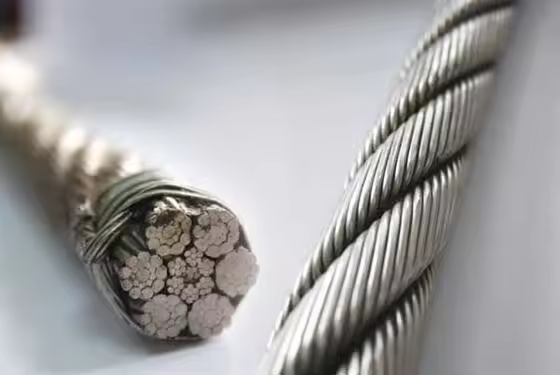Steel Wire Rope: Construction, Applications, and Critical Considerations
- 1826273615
- 6 days ago
- 2 min read
Introduction
Steel wire rope, a vital component in heavy-duty industries, is a complex assembly of metal wires twisted into strands and helically wound around a core. Renowned for its exceptional tensile strength, flexibility, and fatigue resistance, it is indispensable in applications ranging from maritime operations to construction. This article delves into its construction, material innovations, specialized applications, and safety considerations.
Anatomy of Steel Wire Rope
A steel wire rope’s performance depends on its design:
Wires: High-carbon steel wires (or stainless steel for corrosion resistance) form the basic units.
Strands: Multiple wires are twisted into helical strands. Common configurations include 6x19 (6 strands with 19 wires each) or 6x36.
Core: A central core provides structural stability. Types include:
Fiber Core (FC): Lightweight and flexible, but less heat-resistant.
Steel Core (IWRC): Independent wire rope core for heavy loads and high temperatures.
Material Innovations
Modern wire ropes leverage advanced materials to meet extreme demands:
Stainless Steel: Resists corrosion in marine and chemical environments.
Galvanized Steel: Zinc-coated for outdoor and humid conditions.
Plastic-Coated Ropes: PVC or polyethylene layers protect against abrasion and environmental damage.
High-Performance Alloys: Enhanced strength-to-weight ratios for aerospace and deep-sea applications.
Specialized Applications
Beyond conventional uses, steel wire ropes serve niche roles:
Mining and Hoisting: Elevators, cranes, and mine shafts rely on wire ropes for vertical lifting.
Marine & Offshore: Mooring lines, ship rigging, and subsea cable installations.
Aerospace: Aircraft control cables and cargo slings.
Suspension Bridges: Main cables supporting bridge decks (e.g., Golden Gate Bridge).
Oil & Gas: Drilling operations and offshore platform anchoring.
Critical Safety Factors
Wire rope failure can lead to catastrophic accidents. Key considerations include:
Load Capacity: Always operate within the Working Load Limit (WLL).
Fatigue and Wear: Regular inspection for broken wires, corrosion, or deformation.
Lubrication: Reduces internal friction and extends service life.
Terminations: Proper fittings (sockets, clamps) ensure secure connections.
Environmental Risks: UV exposure, saltwater, and chemicals degrade performance.
Standards and Certifications
Global standards govern wire rope manufacturing and usage:
ISO 2408: Specifies general requirements for steel wire ropes.
ASME B30.30: Safety guidelines for rigging and lifting.
DNV-GL Certification: Mandatory for marine and offshore applications.
Maintenance and Replacement
Proactive maintenance is critical:
Visual Inspections: Check for kinks, rust, or strand distortion.
Non-Destructive Testing (NDT): Magnetic particle testing detects internal flaws.
Replacement Criteria: Discard ropes if >10% of wires in a strand are broken.
Future Trends
Smart Ropes: Embedded sensors monitor tension, wear, and temperature in real time.
Eco-Friendly Coatings: Bio-based lubricants and recyclable materials.
Hybrid Ropes: Combining steel with synthetic fibers (e.g., Dyneema®) for lightweight strength.
Conclusion
Steel wire rope remains a cornerstone of industrial engineering, balancing strength, flexibility, and adaptability. As technology advances, its applications expand into smarter, more sustainable solutions. Understanding its construction, material science, and safety protocols ensures optimal performance and longevity in high-stakes environments.




Commentaires